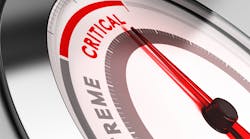How to gain control over your maintenance processes: Understanding your critical assets
Plant Services Editor in Chief Thomas Wilk hatched a plan with George Williams and Joe Anderson to create a podcast series titled “Assets Anonymous.” The idea was for each monthly episode to address one aspect of how to gain better control over your maintenance processes and ultimately drive improved throughout and greater profitability.
All episodes are now available at www.plantservices.com/the-tool-belt, and this month’s cover story draws from each episode to deliver an extended sample of the advice shared by Joe and George. This is part four of our six-part series.
Step 8: What Do I Own, and How Critical Is It?
When people are looking to determine what their critical assets are, what should they look for?
GW: First, for us, is defining what an asset is, and there's two approaches to that. One is your typical ISO standard approach. ISO 55000 says if it adds value, realistic or potential, it's an asset. The standard canned answer I like to give is, if I intend to replace parts on it, it's an asset. If I plan on throwing it out and just replacing it, it's a spare part. Now, that's a high level definition and there's some caveats to that, regarding if it is required from a regulatory agency or if it's a calibrated instrument, then it's still an asset and goes in the system. But generally speaking, we start with that definition.
From there we move into defining criticality, and criticality is based on severity factors, and likelihood of failure factors or occurrence factors. Severity is everything that sits inside the business, from profit goals to commitments to safety, to the environment, to the community. Any asset that can impact any of those goals has a severity factor, so when you're going through severity, you're looking at all those types of factors, and you identify those impacts.
Ultimately you end up at an occurrence score, which is how often does this asset fail? That can use either history you already have, or a general mean time to failure that may exist in industry. That's a product score, and you end up with some criticality factor, and then that criticality factor typically has a much broader number range than what sits inside your CMMS. So then you convert it to either A-B-C or 1-2,-3, or 1-2-3-4-5 based on how it sits inside your CMMS. Yay! Criticality!
Step 9: If Critical, How Does It Fail?
GW: At this point when an asset is considered critical, you're trying to understand exactly how it fails: in what ways, what component failures, and what will cause failure of this asset that I have to make sure I mitigate.
Even these scenarios are not perfect, and I'm going to probably get lots of feedback on this, but when you do an FMEA or an RCM, and you're getting down to those component levels in deciding what the failure modes are and assessing those failure modes, and then coming up with a risk priority number and all that fun stuff that you follow in the process. We've had a failure where we tried to convince a manager of a plant that they needed training in how to properly torque and use precision tools. There was a pump whose electrical connections were on a ceramic block for the motor, and they almost lit this thing on fire because the ceramic block was cracked because they over tightened it. No PM; no FMEA; it’s unlikely that the ceramic block terminal connection being over tightened and causing the crack – which eventually creates an arc and heat and melts all my insulation and creates a fire – is being identified in the FMEA.
So it's not only the formal process, it has to be what happens in the field feeding back into that system. Your failure modes have to be a living entity that include not only what you brainstorm in a room, and hopefully you have all the right people and identify a bunch of stuff, but it's unrealistic to think you will identify 100% of the potential failure modes when you sit in a room and do this exercise. If anybody does believe that, it's probably foolish, you know, the probability is slim and none. It has to be a living list of failure modes that are recurringly looked at and that your CMMS feeds back.
This story originally appeared in the November/December 2022 issue of Plant Services. Subscribe to Plant Services here.